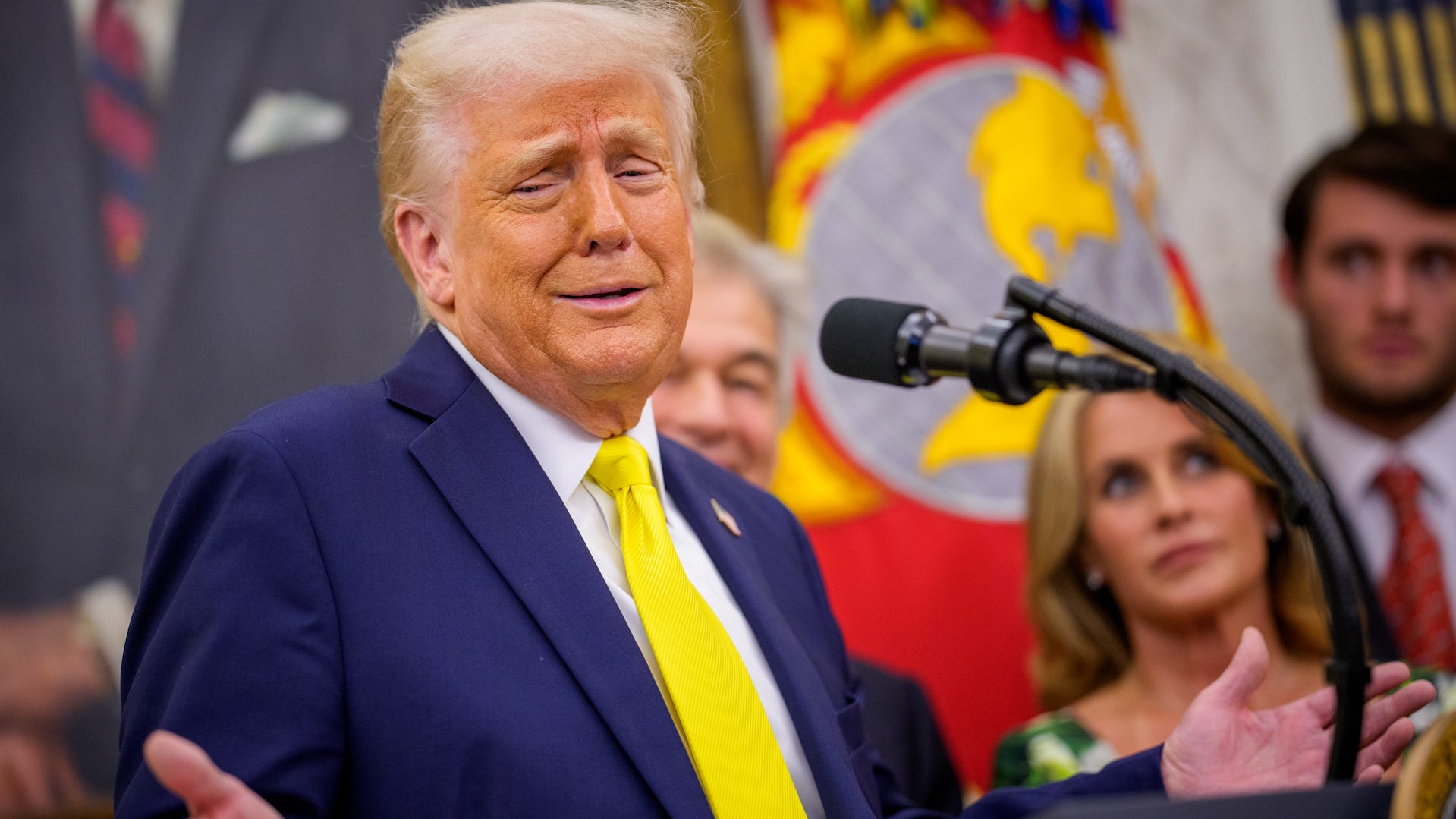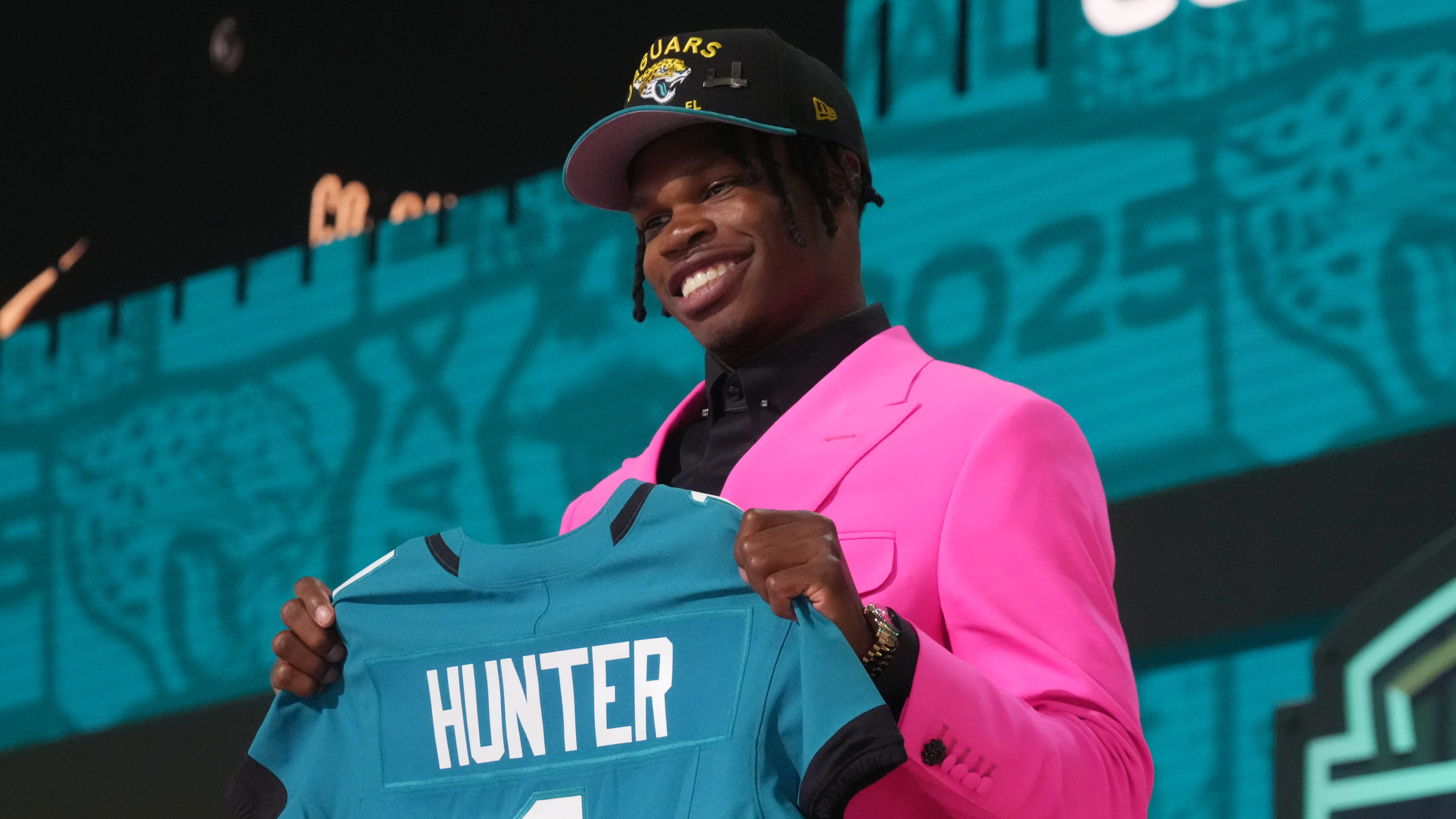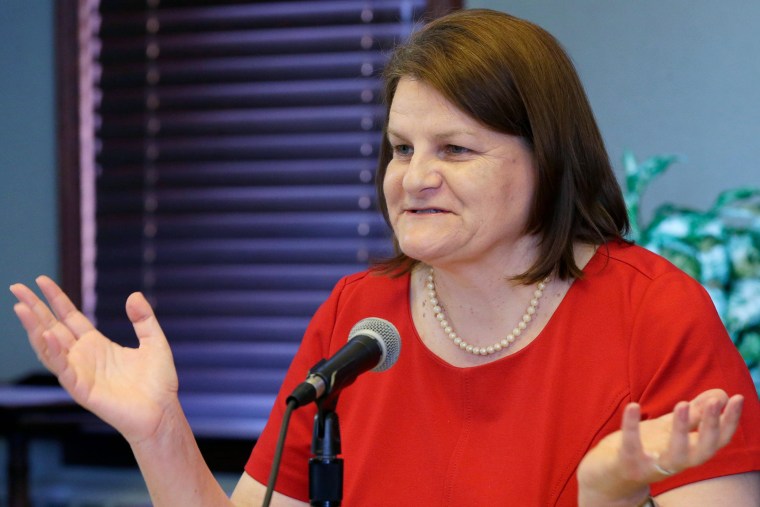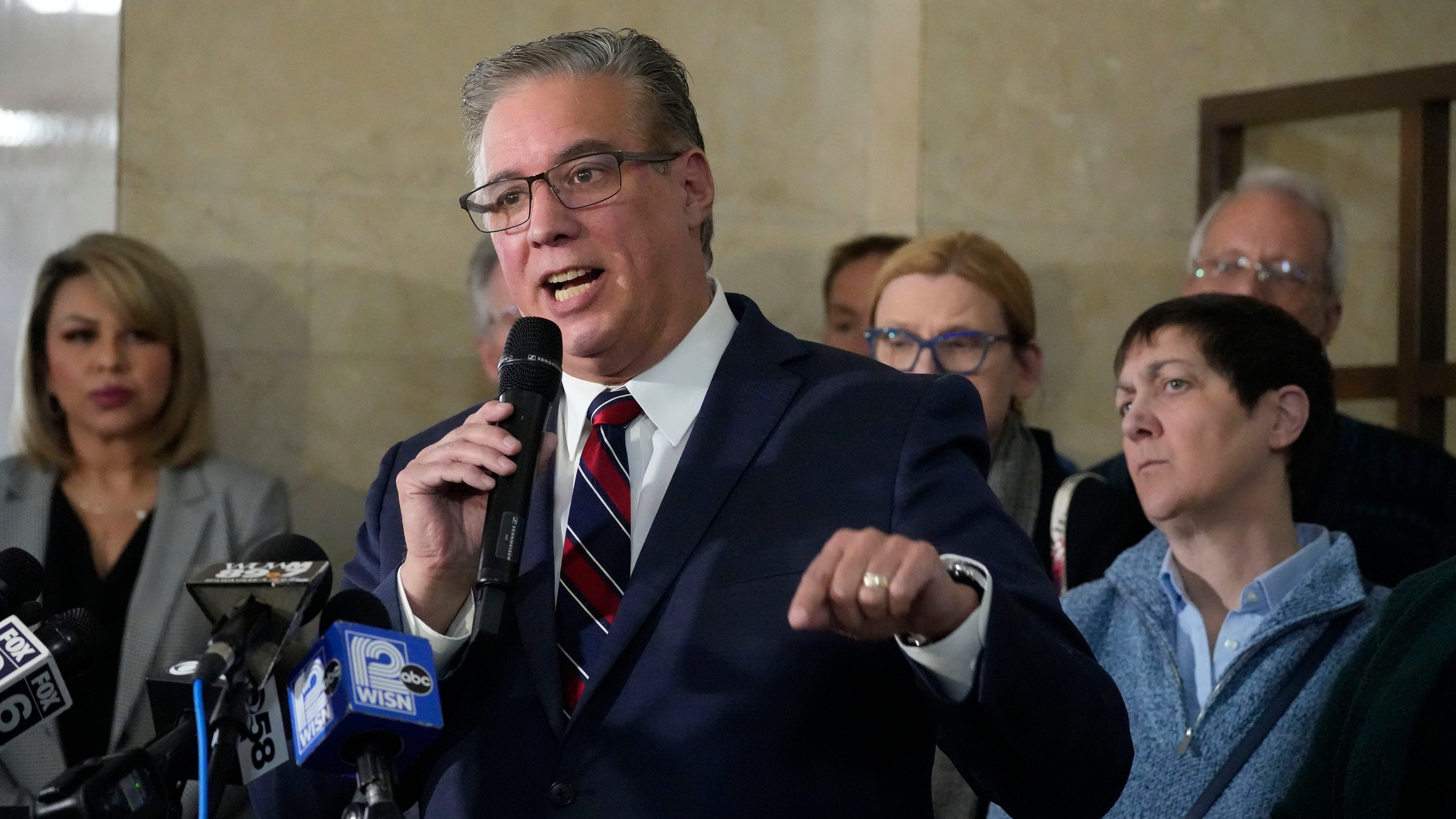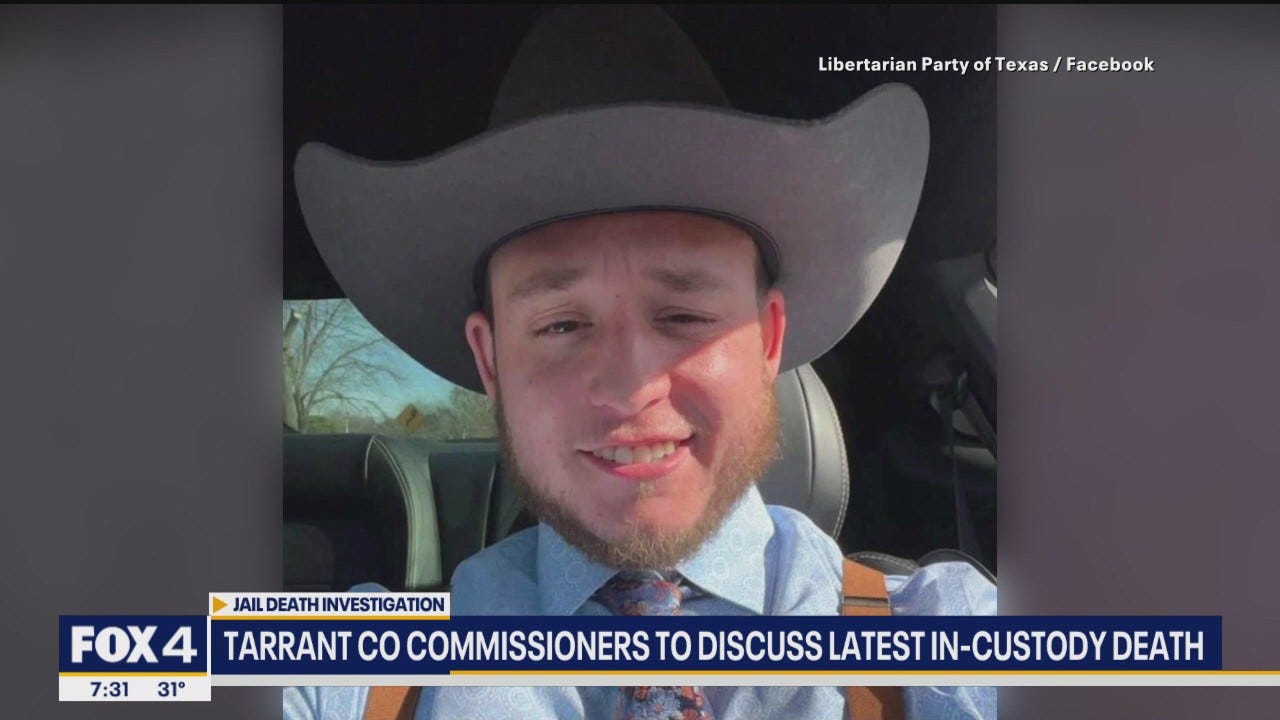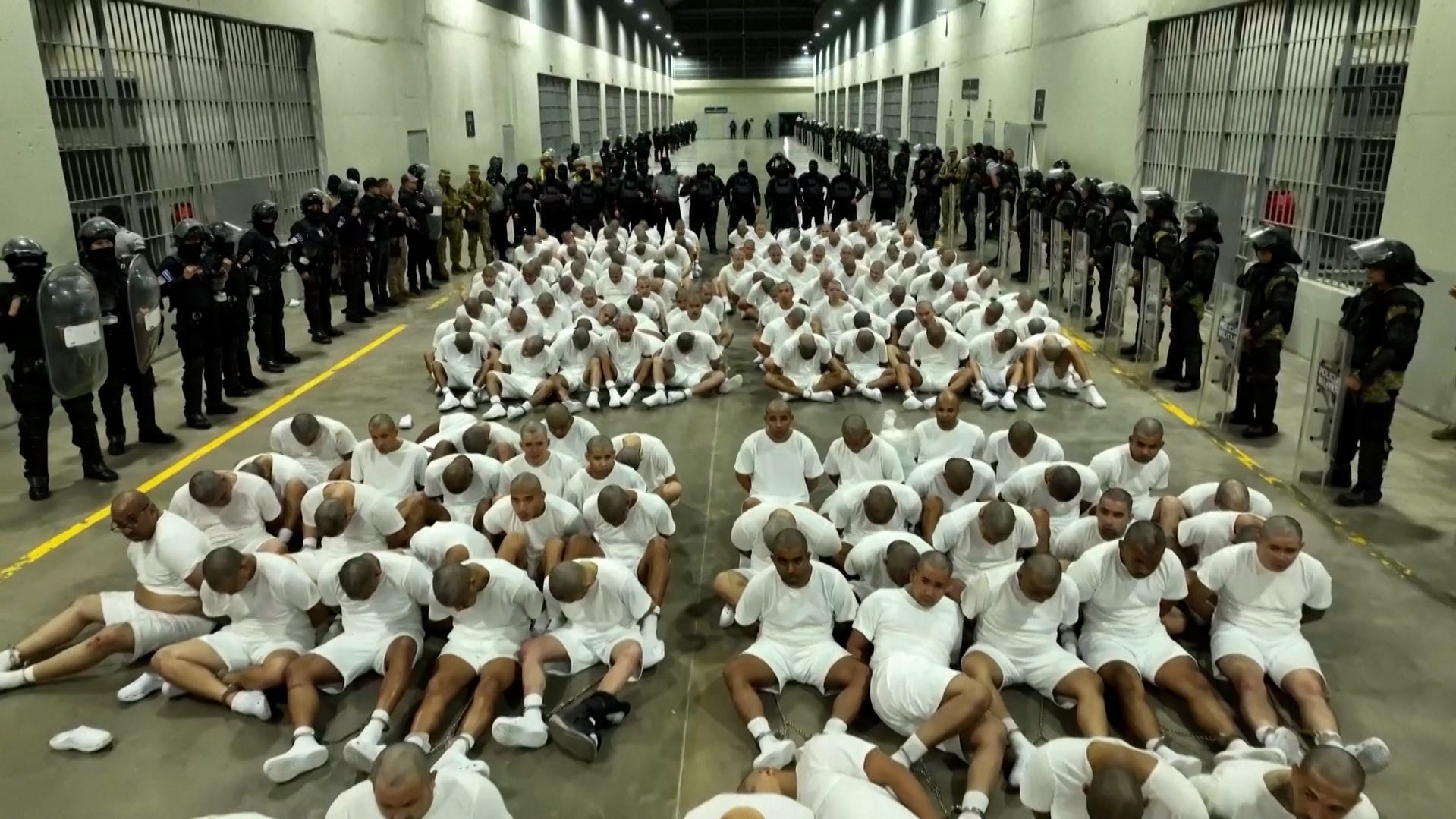From the momentous to the less so, there have been plenty of changes across America in Donald Trump’s first 100 days in office.
100 days of Trump: 3 key changes impacting people across America
100 days after returning to power, Donald Trump is charging ahead with tariffs, an immigration crackdown and federal cuts, including dismantling DEI.
WASHINGTON – From the structure of the global economy to the use of plastic straws, Donald Trump’s second term has already overseen a whirlwind of change.
Not since Franklin Roosevelt has a new president driven so many shifts, so fast. Actually, Trump may have FDR beat on the signature first-100-days marker, even though his predecessor was inaugurated with a Great Depression to tackle.
It takes most presidents months or even years to make a difference in the daily lives of Americans, not to mention those who live around the world. But this time, Trump’s unprecedented use of executive powers has already slashed the federal workforce, banned diversity programs, dismantled USAID, divided opposition Democrats over how to respond and prompted longstanding U.S. allies to calculate how to navigate a new global reality.
More: Trump 100 days: Former president’s success created measuring stick for future leaders
He even seems to have had an effect on the most popular baby names.
Here’s a look at 100 things that have changed during Trump’s first 100 days − the momentous and the less so.
1 – The Dow Jones industrial average has been on a rollercoaster. It plunged with the announcement of tariffs, spiked with news of a 90-day delay, and rose and fell with headlines of an escalating global trade war. The markets faced their worst slide since the coronavirus pandemic and the bond market went into an historic panic.
2 – The number of migrant crossings at the U.S. southern border plummeted since the end of the Biden administration to about 8,450 in February 2025, Trump’s first full month in office, the lowest level in at least 25 years. In December 2024, President Joe Biden’s last full month in office, Immigration and Customs Enforcement had reported 47,000 apprehensions, more than five times more.
3 – Robert F. Kennedy Jr., who gained prominence as a vaccine skeptic, took over the federal health agenda. He banned some artificial food dyes and promised a report by September explaining the rise in autism cases.
4 – The number of deportations by ICE dropped a bit despite Trump administration efforts to step up the pace. More than 12,000 were deported in February 2024, during Biden’s administration, to about 11,000 in February 2025, during Trump’s administration.
5 – Eggs are more expensive. The average cost of a dozen large eggs, which became a symbol of inflation during the 2024 presidential campaign, continued to rise amid a bird-flu crisis, to $6.23 in March, though wholesale prices had begun to drop.
6 – Relations with Canada soured as Trump imposed tariffs and suggested making it the 51st state. The debate over the U.S. president became a major factor in Canada’s elections on April 28.
7 – The Gulf of Mexico was renamed the Gulf of America – at least in official federal government publications.
8 – DEI programs, designed to address the nation’s history of racism, were scrapped across federal government agencies and the military. The Trump administration also targeted the Diversity, Equity and Inclusion programs at private law firms, public universities and other institutions that receive federal funding or rely on federal approvals. T
9 – Republican victories leave Republicans nervous. Randy Fine and Jimmy Patronis were sworn in as new Republican U.S. House members, holding on to GOP seats in special elections in Florida – but by margins slashed in half since last November’s election that Democrats chalked up to Trump’s early controversies as president.
10 – Evidence of that nervousness: Trump backed away from elevating the star of the GOP’s attack on college antisemitism because he was worried Republicans couldn’t hold on to her House seat. New York Rep. Elise Stefanik was nominated as UN ambassador on Jan. 20 and then un-nominated in March.
11 – The Black Lives Matter Plaza, a two-block stretch in downtown Washington, D.C., pointed to the White House, was dismantled and repainted, a capitulation by the city government to Trump. It was created as an emblem of defiance to him during his first term amid protests over the death of George Floyd.
12 – Susan Crawford won a swing seat on the Wisconsin Supreme Court, with potential repercussions on everything from abortion rights to legislative redistricting in the battleground state. Billionaire Elon Musk spent $25 million on behalf of her opponent, making it the nation’s most expensive judicial race ever. It was a boost for Democrats after November’s losses.
13 – The White House overhauled the press pool, the small group of journalists that tracks the president in small spaces and during travel. First the Associated Press, then Reuters and Bloomberg lost their permanent standing in the pool. “New media” outlets, including some with MAGA sentiments, were added to the rotation.
14 – Chinese imports −from toys and clothes to furniture and sports equipment − were slapped with an escalating series of tariffs that reached 145%. China responded by imposing a 125% tariff on U.S. goods – a trade war between the world’s two biggest economies.
15 – The penguins and seals that are the sole inhabitants of the remote Heard and McDonald islands in Antarctica were hit with 10% tariffs on any goods they might be thinking about exporting to the United States.
16 – The nation’s top military official, Joint Chiefs Chairman Gen. Charles Q. Brown Jr., was dismissed and replaced by retired Air Force Lieutenant General Gen. Dan “Razin” Caine.
17 – Two girls died of measles in Texas, the first deaths from the highly contagious virus in the United States in a decade. Neither child had been vaccinated. Across the U.S., two dozen states reported a total of more than 800 cases of measles.
18 – Trump’s average job approval rating during his first three months in office was a bit higher than it was during his first term, 45% compared with 41% in the Gallup Poll. He trailed every other post-World War II president at this point in their terms by double digits.
19 – Views of the Democratic Party sank to record lows, with a favorability rating of 27% in an NBC poll.
20 – In the same survey, 39% of registered voters had a favorable view of the Republican Party.
21 – New Jersey Sen. Cory Booker won props for stamina with a no-bathroom-breaks speech on the Senate floor that stretched past 25 hours, beating the record set by South Carolina Sen. Strom Thurmond. Booker was blasting Trump’s policies; Thurmond had been filibustering the Civil Rights Act of 1957.
22 – Tens of thousands of federal workers were fired. Tens of thousands more took buyout offers.
23 – Elon Musk, the world’s richest person, designed and led the Department of Governmental Efficiency, which cut a swath through federal agencies. DOGE ordered the firing of tens of thousands of federal workers and gained access to closely-held data systems with information on millions of citizens.
24 – Vivek Ramaswamy, the Republican billionaire who was initially Musk’s partner on DOGE, decided to run for governor of Ohio in 2026.
25 – Tesla profits plummeted 71% in the first quarter of 2025 amid a backlash to the brand and Musk, its CEO. Auto tariffs played a role, too. Musk said he would be spending more time at Tesla, less time with DOGE.
26 – Birthright citizenship, guaranteed in the Constitution’s 14th Amendment, was ordered ended by executive order. The issue is headed to the U.S. Supreme Court.
27 – Hundreds of alleged members of the violent Tren de Aragua and MS-13 gangs were deported to El Salvador’s notorious maximum-security prison.
28 – The case of Kilmar Abrego Garcia became a flashpoint in the debate over whether the administration’s immigration crackdown needed to follow due process rules. He was deported from Maryland to the Salvadoran prison in what U.S. officials acknowledged was an administrative error. The Supreme Court told the administration to facilitate his return. The issue remains in the courts.
29 – British Prime Minister Keir Starmer delivered an invitation from King Charles III to Trump for an unprecedented second state visit to the United Kingdom. The president accepted on the spot.
30 – Vice President JD Vance and second lady Usha Vance went to Greenland to test the waters on Trump’s proposal to take it over. The waters were, well, icy. Trump was undeterred, and United Airlines announced it would become the only U.S. carrier with service to Greenland − starting on June 14, the president’s 79thbirthday.
31 – Washington Capitals player Alex Ovechkin broke Wayne Gretzky’s long-standing record for most goals scored in the National Hockey League. Russian President Vladimir Putin, Ovi’s longtime friend, was among those congratulating the Russian player.
32 – Trump is no longer a federal defendant. Indictments on charges of trying to overturn the 2020 election and of mishandling sensitive documents were dismissed at the request of his administration’s Justice Department. Special counsel Jack Smith said in his final report that there was enough evidence to convict Trump.
33 – The U.S. House of Representatives agreed to allow members who were new parents to use “vote pairing” to ease the burden of traveling to Washington with newborns. Speaker Mike Johnson had opposed a bipartisan proposal to allow them to vote remotely.
34 – Attorney General Pam Bondi directed federal prosecutors to seek the death penalty for Luigi Mangione, accused of killing UnitedHealthcare CEO Brian Thompson. The Biden administration had imposed a moratorium on federal capital punishment to study how executions were conducted.
35 – Columbia agreed to dramatic concessions after the Trump administration threatened to cancel $400 million in federal funding amid complaints about antisemitism. The university said it would tighten rules on protests and appoint a senior vice provost to oversee the Middle Eastern studies department.
36 – Harvard refused Trump’s demands. The administration said it would freeze more than $2 billion in federal funding, and the president said the school should lose its tax-exempt status. Harvard then sued the Trump administration, accusing it of threatening the school’s academic independence.
37 – Paul, Weiss, Rifkind, Wharton & Garrison LLP was the first of several elite law firms to cut a deal to avoid threatened penalties from Trump. In all, the firms have agreed to provide about $1 billion worth of free legal work for projects the firm and Trump support.
38 – Perkins Coie, which represented Hillary Clinton’s 2016 presidential campaign, refused Trump’s demands, as did Jenner & Block and WilmerHale. Their lawsuits are in the courts.
39 – Environmental regulations on coal production were loosened, part of Trump’s priority to increase U.S. energy production. “Drill, baby, drill” was a signature promise at his campaign rallies.
40 – Logging was allowed on more than half of national forests, and federal lands in Nevada and New Mexico were opened to the mining of rare minerals, reversing prohibitions Biden put in place during the final weeks of his administration.
41 – A vast Pacific Ocean reserve, 750 miles west of Hawaii, was opened to commercial fishing. President George W. Bush had established the reserve, home to coral atolls and endangered sea turtles, and President Barack Obama expanded it to nearly 500,000 square miles.
42 – The U.S. and Iran opened negotiations in Oman over Tehran’s nuclear program, the first direct talks in a decade.
43 – Economic forecasters increased the odds of a recession in the wake of Trump’s trade war. A survey of economists in March raised the probability of a global recession this year to 47%, up from 25% in February.
44 – Consumer confidence plunged, to 50.8% in April from 71.7% in January.
45 – The dollar weakened, falling to a three-month low in April amid economic uncertainty.
46 – Americans are less dissatisfied with the direction of the country than when Trump took office. In January, those polled by Gallup were dissatisfied by 77%-20%, almost 4-1. In March, they were dissatisfied by 62%-37%, less than 2-1.
47 – Most staffers were fired and most contracts cancelled at the U.S. Agency for International Development. The foreign-aid agency was officially moved to the State Department.
48 – The Education Department was largely dismantled, with about half of its staff fired.
49 – Ceasefire efforts in Gaza stalled as Israel carved out a broad “security zone,” displacing hundreds of thousands of Palestinians.
50 – The head of NATO credited Trump’s demands for spurring a “staggering increase” in defense spending by European countries.
51 – Nvidia announced it planned to build AI servers worth as much as $500 billion in the U.S. over the next four years, seen as a victory for Trump’s tariffs in moving manufacturing into the United States.
52 – The Swiss drugmaker Novartis announced plans to build pharmaceutical manufacturing plants in the U.S., one of the goals of Trump’s tariff regime.
53 – China suspended exports of rare earth minerals and magnets, material that is crucial to build cars, planes, robots, missiles and semiconductors. The move was a response to Trump’s tariffs.
54 – Federal restrictions on just how much water can flow from shower heads were loosened by presidential executive order, addressing a longstanding Trump pet peeve.
55 – Rep. Darrell Issa, a California Republican who is vice chair of the House Foreign Affairs Committee, nominated Trump for the Nobel Peace Prize for his work in the Middle East. The winner is usually announced in October.
56 – Utah became the first state to ban fluoride in public drinking water, a measure opposed by many dentists and medical organizations but praised by Health and Human Services Secretary Robert F. Kennedy Jr. and others who question its safety.
57 – Preorders for the hotly awaited release of the Switch 2, Nintendo’s new video game console planned for April 9, were delayed for two weeks or so after Trump unveiled tariffs, including on Vietnam, where it is made. The company announced that the price would remain at $499.99 but that accessories would “experience price adjustments.”
58 – Amazon added reruns of “The Apprentice,” the reality-TV show starring Donald Trump, to its Prime Video streaming service. It ran from 2004 to 2017.
59 – A website called thebump.com reported that the most popular baby name in 2025 was Kai − which happens to be the name of Trump’s oldest grandchild.
60 – The number of tornadoes in the U.S. surged to nearly double the historical average, AccuWeather reported. More than 470 had been reported by early April, killing more than 30 people and causing billions of dollars in damage and economic loss.
61 – The number of foreign travelers arriving in the U.S. dropped in the first three months of 2025 by about 4.4%, compared with the last three months of 2024. In a March year-over-year comparison, the National Travel and Tourism Office calculated the drop doubled to almost 10%.
62 – Comedian Amber Ruffin was canceled as the entertainer for the White House Correspondents Association dinner in April as the journalism organization’s leaders said it was reimagining the annual event in Washington, D.C.
63 – Comedian Amber Ruffin was then booked to be the entertainer for the PEN America gala in New York City in May.
64 – Trump became the first sitting president to attend the Super Bowl. The Philadelphia Eagles defeated the Kansas City Chiefs 40-22 in the Superdome in New Orleans.
65 – Trump became the first sitting president to make more than one trip to the Daytona 500. He had also attended the NASCAR race in his first term. President George W. Bush had attended once while in office.
66 – Trump attended the NCAA wrestling championships in Philadelphia. He had attended the championships in Tulsa in 2023, when he was out of office.
67 – Trump attended Ultimate Fighting Championship events in New York and in Miami. During his first term, he became the first sitting president to attend a UFC fight.
68 – Democratic governors sought to find areas of agreement with Trump, a contrast to his first term. During an Oval Office meeting to discuss Great Lakes protection and other state issues, Trump called Gov. Gretchen Whitmer of Michigan “a very good person.” He had previously referred to her as “that woman from Michigan.”
69 – Democratic governors stepped up confrontations with Trump, including several who are considering 2028 president bids. Gov. Tim Walz of Minnesota, the Democratic vice-presidential nominee in 2024, called on party leaders to “do something, dammit!” Even Whitmer looked less than enthusiastic about being embraced in the Oval Office, at one point holding file folders up to hide her face from news photographers.
70 – Trump showed reporters the mock-up for a laminated “gold card,” a special visa that would allow immigrants to buy legal status in the U.S. for $5 million each. The card showed Trump’s face, the Statue of Liberty, a bald eagle and the words “The Trump Card.”
71 – Presidential golf is back. Trump spent at least 24 days on the golf course between Inauguration Day and April 19. Trump played three rounds of golf the weekend after announcing big reciprocal tariffs on a host of nations, claiming a club championship as financial markets plummeted. Then–President Joe Biden golfed once during his first 100 days in office.
72 – The Saudi-backed LIV Golf league held its first domestic event of the year at Trump National Doral Golf Club in Miami. The president dined with LIV golfers, and his family members attended the tournament. Saudi Arabia, a key U.S. ally in the Middle East, is keen to influence U.S. foreign policy in the region. Trump is keen to host professional golfers at his clubs, having been snubbed by the PGA Tour in the past.
73 – Palm Beach again ranks among world capitals as a major power center. Since returning to the presidency, Trump regularly departs the White House on Friday to spend the weekend at Mar-a-Lago, his private club in South Florida. Trump hiked the club membership fee last year to $1 million.
74 – Transgender student athletes are banned from playing women’s sports. Trump signed an executive order in the White House surrounded by little girls in sports jerseys.
75 – Smoot-Hawley is a thing again. The 1930 tariff act, which is name-checked in a famous scene from the 1986 movie “Ferris Bueller’s Day Off”, is being mentioned as part of the political debate around Trump’s tariffs. Kentucky GOP Sen. Rand Paul is warning that Smoot-Hawley, blamed for worsening the Great Depression, led to a GOP political massacre that kept the party out of power for six decades.
76 – Crypto is king! Trump signed an executive order to promote cryptocurrencies, staging an event with crypto leaders in the White House. The president even has his own crypto business. But Bitcoin, the most popular cryptocurrency, lost 14% of it’s value between Inauguration Day and April 21.
77 – Gold prices rose above $3,300 an ounce for the first time as investors looked for safe havens amid turmoil in the stock markets.
78 – Trump’s business interests are expanding. The president launched a meme coin, a type of cryptocurrency, shortly before taking office and its value soared. It has since sunk in value, but still has a market capitalization of $1.6 billion.
79 – Trump’s face could be on Mount Rushmore and a proposed new $250 bill. Both of those ideas were proposed by GOP lawmakers in legislation filed in the House this year.
80 -Fort Bragg, which had been renamed Fort Liberty during the Biden administration, was re-renamed Fort Bragg. The original Fort Bragg honored a Confederate general; Defense Secretary Pete Hegseth said the new Fort Bragg honored a World War II hero. He was barred by law from naming it for someone who had served in the Confederacy.
81 – Move NASA to Ohio? HUD to Houston? State and local officials had until April 14 to vie to relocate federal agencies away from Washington and across the country. Decisions are pending.
82 – The federal government is consolidating massive personal records about individual Americans which had been held separately at the Social Security administration, the Treasury Department and elsewhere. Trump signed an executive order to take the step, proposed by Musk and DOGE, despite concerns about privacy and security.
83 – Trump fired the board of the John F. Kennedy Center for the Performing Arts in Washington, D.C., and named himself as chairman. The new leadership announced the exterior lighting of the building would permanently feature red, white and blue. The Broadway hit “Hamilton” canceled its upcoming performance. “I never liked ‘Hamilton’ very much,” the president said.
84 – States were told they could no longer use Medicaid funding to pay for gender-affirming care for minors.
85 – The U.S. Naval Academy’s library was purged of books that officials said violated the Trump administration’s ban on DEI, among them “I Know Why the Caged Bird Sings” by Maya Angelou. Left on the shelves was “Mein Kampf” by Adolf Hitler.
86 – Paper straws? Out. Plastic straws? Back. Biden last year had ordered the federal government to phase out the purchase of single-use plastics, such as straws, by 2035. Within weeks of his inauguration, Trump ordered the federal government to stop buying paper straws.
87 – Federal prosecutions for violating the Foreign Corrupt Practices Act are on hold. Trump signed an executive order arguing that bribery prosecutions hurt U.S. companies trying to compete overseas. Among those convicted was Paul Manafort, Trump’s campaign chair in 2016. Trump pardoned him in the final days of his first term.
88 – Funding for the Voice of America was slashed. Trump accused it of being a voice of “radical propaganda.” His attempt to fire its workers is in the courts.
89 – TikTok has avoided the chopping block − that is, the congressionally mandated deadline for the popular app to be separated from its Chinese owner or be banned in the USA. Trump is trying to strike a deal, though that effort has become entangled in the trade war.
90 – The Consumer Financial Protection Bureau ceased operations in February on order from its acting director, Russell Vought. The bureau, a top cause of Massachusetts Democratic Sen. Elizabeth Warren, was created in the wake of the Great Recession to help fight financial fraud. Now it’s one of the federal agencies being dismantled by DOGE, but a federal judge ordered the Trump administration to halt efforts to shutter the CFPB.
91 – Governing by tweet is back. Except now it’s governing by Truth, as Trump takes to his social media platform, Truth Social, to announce all manner of administration actions. His big 90-day pause on reciprocal tariffs? Announced first on Truth Social.
92 – The presidential press conference is reborn. Trump took questions from the media while signing executive orders on his first day back in office. He hasn’t stopped talking since. Trump’s media availabilities have been constant, and are coming in all forms, including during Oval Office events, while meeting with world leaders, on Air Force One and in actual press conferences. It’s a big contrast with Biden, who was tightly scripted and had limited media availability.
93 – American diplomacy looks a lot different. Just ask Ukrainian President Volodymyr Zelenskyy. Trump berated Zelenskyy in the Oval Office and later told him to leave the White House, a shocking moment in the annals of U.S. foreign relations.
94 – Bilateral negotiations between Ukraine and Russia may loom. The conflict wasn’t settled in a day, as Trump had promised during the campaign, but the administration has pushed for progress or threatened to “move on.”
95 – Dozens of court cases have been filed to block administration actions at least temporarily, according to a Lawfare tracker. That is a record use of the court system as a recourse by states, unions, activist groups and individuals.
96 – Vermont Independent Sen. Bernie Sanders became the most prominent politician ever to speak onstage at Coachella and, at 83, probably the oldest. He and New York Democratic Rep. Alexandria Ocasio Cortez drew big crowds across the country with their “fighting oligarchy” tour.
97 – Former Democratic presidents Bill Clinton, Barack Obama and Joe Biden spoke out against Trump, at odds with a general tradition. Biden, who had largely disappeared from public view after Trump’s inauguration, delivered a speech in Chicago on April 15, accusing his successor of “taking a hatchet” to the Social Security administration.
98 – For 132 years, presidents who won two terms served them back-to-back. With Trump’s inauguration, he dislodged Grover Cleveland’s solo standing as the only president to win a term, lose an election, then win another term. “It’s kind of weird, and it’s kind of fun,” said Cleveland’s grandson, George Cleveland, of Tamworth, N.H.
99 − An addition to the White House grounds: 100-foot flag poles to display the American flag that Trump announced he would have installed on the North Lawn and the South Lawn.
100 – Trump suggested he might run for a third term, despite the Constitution’s 14th Amendment barring it. His company is selling “Trump 2028” hats for $50. He has encouraged the speculation and declined to endorse Vice President JD Vance as his successor. But does he mean it?
